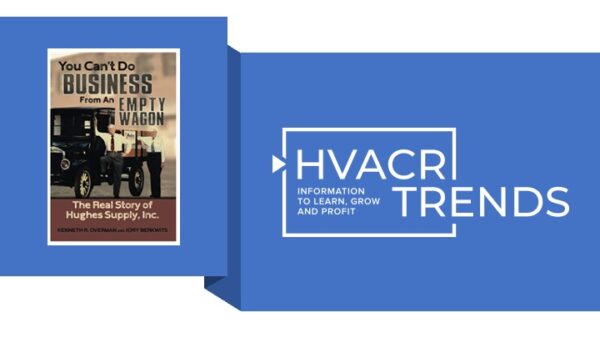The current economic issues continue to cause a high level of supply chain disruptions that although showing some signs of improvement don’t appear to be going away soon.
Plus Bonus wisdom – from the Hughes Brothers.
The past couple of years dealing with supply chain issues has made finding that balance between low cost and available product difficult. Your business dynamics haven’t changed, but the risks have made managing your inventory more difficult.
I worked many years in distribution category management and the supply chain problems remind me of the old photos I used to see hanging up at the former Hughes Supply locations (many of these locations are now called Anixter/WESCO or Hughes Supply owned by Hajoca).
There was one memorable photo of the Hughes Brothers that was hanging in almost every conference room standing next to a 1920’s Model T truck with the caption “You Can’t Do Business From An Empty Wagon”.
As a lifelong distributor this might be the only time I am going to share something from Amazon, but there is a great book on the Hughes Brothers story I would recommend.
https://www.amazon.com/You-Cant-Business-Empty-Wagon/dp/B086MKGHGN
It’s only a book, so please forgive me.
That universal distribution truth of having the right inventory on hand to sell, still rings true even 100 years later.
My Top 5 Tips to help mitigate your Distribution Supply Chain Risk
- Don’t work in a vacuum- talk and work with your manufacturer partners – Communicating with your key partners on fill rates and back orders is critical to success. If things are improving you should see the number of back orders declining and fill orders rates improving. If they are not do not wait to act. Speed is critical. Out-of-Stocks drive your mutual customers to competitors – your key manufacturer partners don’t want that to happen. It’s a lose-lose for both distributors and manufacturers, so work together.
- Build buffer inventory domestically for your offshore product- The primary determining factor for choosing off-shore supply is low cost. The low cost “good price” SKU’s help you win orders and take share from the competition. You need that “good price” product and often the only option is offshore product. Off-Shore supply chain disruptions require that you consider building buffer inventory to not get caught selling from an empty wagon.
- Develop Near Shoring (Mexico, Canada, etc.) or Re-Shoring (Domestic Supply) contingency plans- If you build buffer inventory effectively while maintaining proper inventory carrying costs it will buy time to find product alternatives if your supply chain issues do not improve.
- If you are a multi-site distributor, optimize your inventory through warehouse transfers – There are times where you are unable to build buffer inventory, or have time to build contingency supply plans, but when possible build extra A&B inventory smartly at the RDC to fill local orders with nightly replenishment. If you don’t have enough buffer inventory, It’s a simple equation – Lost Orders = Lost Customers.
- Use your A, B, C, D inventory management system to prioritize products to act upon. Your ‘A’ and ‘B’ SKUs are the most important to your customers business. As your highest selling SKUs, they are often the most competitively priced. That is why many of your top selling A & B’s may be offshore or private label branded products. For example – An Offshore, Private Label ‘A” SKU is your highest risk profile. It’s coming off a boat, it’s private label (which the manufacturer will deliver minimal support vs. their branded line), and it’s an often low price, but top selling SKU for your business. That is high risk and high reward SKU and having a plan for avoiding supply chain issues is critical to success.
If you look at your risk profile at the SKU level and build proper risk assessment and contingency plans it will help you react quicker to any future supply disruptions. Having a laser focus on your A and B Items is critical to success, in normal and abnormal supply times.
Putting your competition on the defensive because you have the products, they can’t get reliable supply on, will help you take share in these turbulent supply chain times.
The Hughes Brothers were right, it is easier to sell when your wagon is full. The competitors who don’t step up and that are struggling to fill important customer orders….well….make them regret their poor planning. The Hughes Brothers happily filled the orders the competition couldn’t. I think they were onto something.
As always, we would love to get your feedback, so please feel free to comment below or reach out to me directly at john.gunderson@dorngroup.com
